#i. SCRIPTS - MUSE: JANE HOPPER.
Text
secondary muse tag drop 001.
#i. SCRIPTS - MUSE: WILLIAM BYERS.#i. SCRIPTS - MUSE: JOYCE BYERS.#i. SCRIPTS - MUSE: JIM HOPPER.#i. SCRIPTS - MUSE: WILLIAM DENBROUGH.#i. SCRIPTS - MUSE: JANE HOPPER.#i. SCRIPTS - MUSE: ROWENA MACLEOD.#i. SCRIPTS - MUSE: BOBBY SINGER.#i. SCRIPTS - MUSE: MEG MASTERS.#i. SCRIPTS - MUSE: SAM WINCHESTER.#i. SCRIPTS - MUSE: MICKEY MILKOVICH.#i. SCRIPTS - MUSE: BILLY LOOMIS.#i. SCRIPTS - MUSE: NATE JACOBS.#i. SCRIPTS - MUSE: JOE GOLDBERG.#i. SCRIPTS - MUSE: KATHERINE PIERCE.#i. SCRIPTS - MUSE: ELENA GILBERT.#i. SCRIPTS - MUSE: EMILY DAVIS.
0 notes
Photo
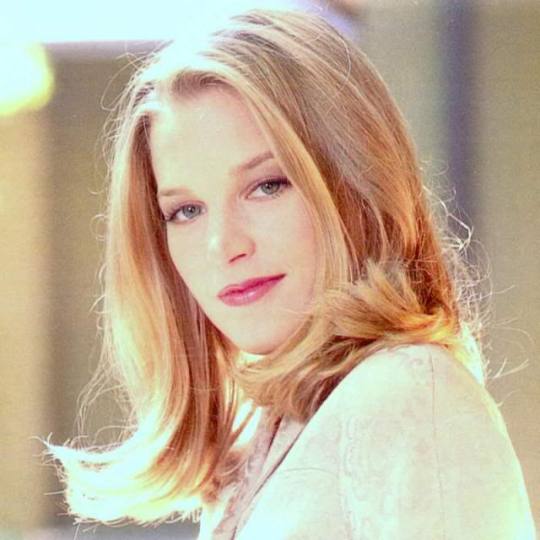
Famous Muses & Groupies in Rock Music Pt. 42
MUSE: Bridget Fonda (full name Bridget Jane Fonda)
Bridget was born on January 27th, 1964 in Hollywood, CA into the Fonda family acting dynasty. Her father is film actor and producer Peter Fonda, and her mother is artist Susan Brewer. Her grandfather was Oscar winning movie star Henry Fonda and her aunt is two-time Oscar winning actress Jane Fonda. Bridget is named after actress Margaret Sullavan’s (Henry’s first wife) daughter, and Bridget’s middle name is a reference to both her aunt and mom (Susan’s middle name is also Jane). She has one brother, Justin and a stepbrother, Thomas McGuane, Jr. (!!). Bridget and Justin were raised in Los Angeles for the first half of their childhoods until their parents divorced in 1974, when Peter and his second wife Portia Crockett moved with the kids to Paradise Valley, MT. Bridget graduated from Westlake School for Girls and the Lee Strasberg Theatre Institute of NYU.
Bridget didn’t start acting professionally until she was done with college, but she can be quickly seen in Peter’s and Dennis Hopper’s classic film, Easy Rider (1969). In the hippie commune scene, during the long, pan shot of the local residents, the little girl sitting on Wyatt’s (Peter’s) lap is 4-year-old Bridget. Her breakthrough movie role was in Francis Ford Coppola’s The Godfather Part III (1990), which then followed with substantial parts in the cult hits Drop Dead Fred (1991), Doc Hollywood (1991), Single White Female (1992), Army of Darkness (1992) and Point of No Return (1993). She also co-starred with Nicolas Cage in the popular romantic comedy It Could Happen to You in 1994. Bridget’s most acclaimed performances are as hippie-stoner Melanie in Quentin Tarantino’s Jackie Brown (1997) and as Billy Bob Thornton’s nagging mid-western wife Sarah in Sam Raimi’s A Simple Plan (1998). Journalist-turned-filmmaker Cameron Crowe wrote the script of his romantic comedy Singles (1992) specifically with Bridget in mind, where she played grungy Seattleite Janet.
This is another one of these entries where Bridget could fit into either the film muses/gfs section or the music muses/groupies. But I decided to go with the music one since I don’t think she was ever involved with a writer, producer or director romantically. In Bridget’s personal life she was in her first high-profile relationship with fellow actor Eric Stoltz from 1990 to 1998. They collaborated together in the flop Bodies, Rest & Motion (1993), and also attended the Academy Awards in ’98. The following year Bridget began dating country music artist and movie actor Dwight Yoakum from 1999-2002, and the two were regularly photographed at Hollywood parties. On February 27th, 2003, Bridget experienced a bizarre car crash which resulted in her fracturing her vertebra. The same month she started dating Oingo Boingo frontman-turned-film composer Danny Elfman, and only a month later they announced their engagement in March. The couple married in November ’03 and despite the seemingly rushed origins, Bridget and Danny are still together to this day. They have one son, Oliver, born sometime in January 2005.…No offense to these dudes, but they must’ve felt way out of their leagues being with Bridget (especially Dwight).
The weird thing about Bridget is that she completely disappeared from the public eye right after she got with Danny, with no explanation. A lot of people theorize that the car accident was so serious, that it caused permanent damage physically or mentally. But if you look at her resume, her last completed film was The Snow Queen (2002), which finished shooting over a year before the crash. Plus she’s attended a handful of events with Danny since 2009, where she appears to be behaving normally and looks fine. So like, IDK. Maybe she was just over it and burnt out on showbusiness? Especially with the crazy shit in her family’s history. Whatever the reason, good for her living her best life outside of the spotlight (even though we miss her!).
#Bridget Fonda#danny elfman#dwight yoakam#eric stoltz#ichty just happened to be on tv tonight too lol#musesandgroupiesseries
14 notes
·
View notes
Text
‘O.C. and Stiggs’ And The Utterly Unreleasable, Mind-Roasting Summer Of Robert Altman by Keith Phipps
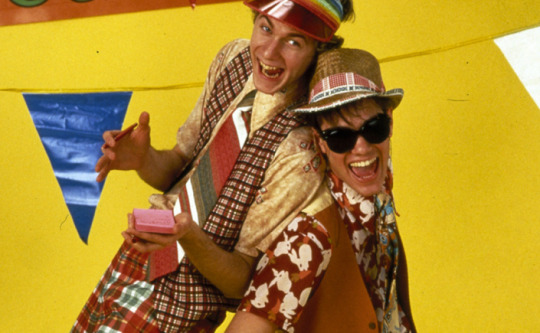
[This month, Musings pays homage to Produced and Abandoned: The Best Films You’ve Never Seen, a review anthology from the National Society of Film Critics that championed studio orphans from the ‘70s and ‘80s. In the days before the Internet, young cinephiles like myself relied on reference books and anthologies to lead us to film we might not have discovered otherwise. Released in 1990, Produced and Abandoned was a foundational piece of work, introducing me to such wonders as Cutter’s Way, Lost in America, High Tide, Choose Me, Housekeeping, and Fat City. (You can find the full list of entries here.) Over the next four weeks, Musings will offer its own selection of tarnished gems, in the hope they’ll get a second look. Or, more likely, a first. —Scott Tobias, editor.]
Robert Altman was happiest working in the shadows. That’s true of his relationship with Hollywood—where he never fit in, except as the town’s designated maverick—but also true of his relationship with other movies. Altman always had a lot to say about his craft, even if he tended to treat interviews as opportunities to reiterate points he made many times. One talking point he returned to, including when I spoke to him in 2000, is the notion that influence could work backwards. “The directors who’ve probably had the most influence on me,” he said, “were probably names I don’t even know, because I looked at a film that was really bad and I would say, ‘Hmm, I’m never going to do that.’ That’s probably the most direct positive influence on the work I do. I don’t even know who those directors are.”
When talking about Altman, it’s always worth talking about what he was trying not to do as much as what he hoped to accomplish. M*A*S*H can be seen as a war film determined to show viewers what other films would not, from the bloody mess left after battles end to the long stretches of wartime boredom to the sometimes ugly sides of the lifesaving heroes. McCabe and Mrs. Miller is a Western without heroes. The Long Goodbye lets a noir play out in the sunny, counterculture-filled ‘70s Los Angeles.
All of which sort of explains how Altman came to direct the teen comedy O.C. and Stiggs—but only sort of. Shot in 1983—while films like Screwballs, Private School, and Losin’ It rolled out in multiplexes across America—it should have been released to catch the wave of raunchy teen comedies stirred by National Lampoon’s Animal House in 1978 and made into a tsunami by Bob Clark’s Porky’s three years later. But Altman was far from on board with the T&A-filled spirit of the times. When approached by producer Peter Newman, he recalled thinking, in an interview conducted for the film’s DVD release, “This isn’t my kind of film. I don’t know how to do these kinds of films.’ But that was a time when these teenage films were kind of in…mode. And I hated them. I just hated them. And I thought, here’s a chance to do a satire on something that I feel strongly about.” “I went after it,” he added, in a telling choice of phrase, “in that matter.”
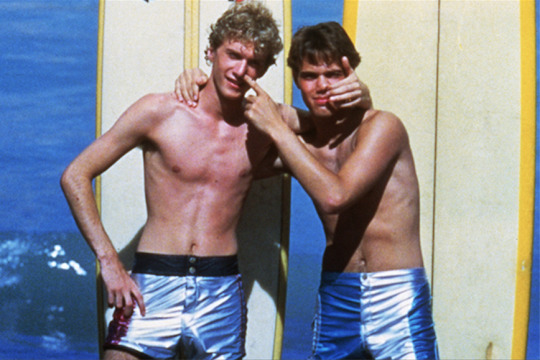
He at least had slightly more prestigious source material from which to draw, if only slightly. Though the film doesn’t bear the National Lampoon name, its title characters, a pair of prank-happy Arizona teens, come from the magazine’s pages. Created by Lampoon writers Ted Mann and Tod Carroll, Oliver “Out Of Control” Ogilvie and Mark Stiggs became favorite recurring characters in the Lampoon’s last gasp of relevance in the early ’80s. Their stories also embodied the changes to the magazine’s spirit in the Reagan era, when the always freewheeling publication started punching down far more often than it punched up. Two children of privilege, the O.C. and Stiggs of its pages enjoy an adolescence filled with excess, abuse, and casual racism and misogyny. Their adventures climaxed with the novella-length “The Utterly Monstrous, Mind-Roasting Summer of O.C. and Stiggs,” which took up the entirety of the Lampoon’s 1982 issue.
It also provided the backbone to Altman’s film, courtesy of a screenplay credited to Mann and Donald Cantrell. In Hunter Stephenson’s extensive history/appreciation of the film, Mann notes that Carroll worked on the script but took his name off the movie. Altman then reworked the script and allowed it to drift further from the original vision thanks to a typically improvisation-friendly set. Really, he had no choice. Altman was never known for being overly respectful of screenplays, but O.C. and Stiggs plays as if he’s compelled to actively work against the source material while still following the outline of the plot. There’s a brutal wit to Mann and Carroll’s stories*, but the teenage nihilism at their core is hard to square with Altman’s sensibility, which could be unsparing of human behavior while still maintaining an underlying respect for human decency.
As such, Wino Bob, the boys’ “Negro derelict” friend, is given all the dignity a character named Wino Bob can hope to have, thanks to a heartfelt performance from Melvin Van Peebles. The heroes’ attempt to shame a pair of teachers in a gay relationship becomes the occasion for one of the teachers to say he doesn’t care. And the film’s central conflict between O.C. and Stiggs’ and the Schwab family, a grotesque suburban clan that’s grown rich from insurance sales, becomes a battle between haves and have-nots, with O.C. now motivated to exact revenge on the Schwabs thanks to the cancellation of his grandfather’s (Ray Walston) health insurance, a development that will send O.C. off to live with relatives in Arkansas at the end of the summer unless something can be done. What emerged looks more like an Altman movie than, say, Fraternity Vacation, but it’s a strange beast nonetheless, a Brundlefly-like hybrid that’s not really equipped to live in any known movie habitat. There’s too much overlapping dialogue and restless camerawork, to say nothing of the virtual absence of nudity, for Porky’s fans, too many outrageous pranks for the arthouse.
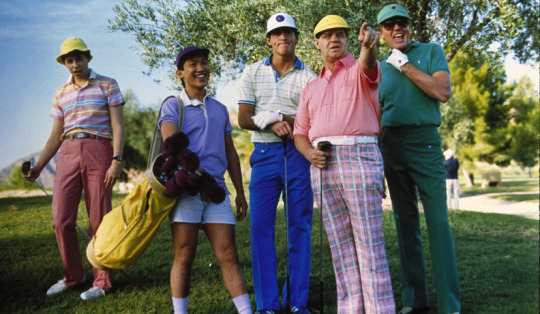
That might explain why MGM didn’t know what to do with the movie, shelving it after disastrous screenings in 1984, which came and went without a release. So did 1985. And 1986. And though the film apparently played some theaters in 1987, it didn’t reach New York until 1988, when it appeared at Film Forum as part of a Dennis Hopper retrospective. Most viewers who encountered it did so on VHS in the late ‘80s, when it already looked like a lost film from a bygone time, the T&A comedies of the early ‘80s having given way to the more sympathetic efforts of another Lampoon alum, John Hughes. (If nothing else, Jon Cryer, who plays the much-tormented Randall Schwab, already looked noticeably younger in his feature debut by the time saw the light of day.)
Yet while O.C. and Stiggs will deservedly never be mentioned near the top of any Altman ranking of the director’s film (or, if we’re being honest, too close to the middle), there’s nothing else quite like it. Both Daniel H. Jenkins and Neil Barry (O.C. and Stiggs, respectively) make for appealing leads, embodying their characters’ screw-it-all, question everything, respect nothing teenage attitude without making them seem heartless. (That spirit in two lines: “I want you to call me Stiggs. It sounds more ridiculous.”) And for every obvious flaw, there’s some compensating element. A big wedding set piece doesn’t really go anywhere, but it does feature a charming dance sequence between Jenkins and Cynthia Nixon (both of whom would stay in Altman’s orbit for a while). The comedy falls flat in the action finale, but it does feature a bizarre, self-parodying performance from Dennis Hopper as a Vietnam vet for whom the war never ended. Some sections drag, but Altman throws in a winning concert scene from King Sunny Ade. Also featured: Jane Curtin as an inventive alcoholic mom for whom every object can double as a place to hide booze, a supremely chill Martin Mull, Bob Uecker, and a cameo from Hal Phillip Walker (Thomas Hal Phillips), the third-party candidate whose cryptic proclamations filled the background of Nashville.
It’s a film that time has only made more intriguing, thanks to its unmistakable Altman-ness, its undeniable eighties-ness, and the uneasy alliance the film forces between the two. Altman “went after” the ‘80s teen movie, and though the genre barely noticed his attack, the resulting film remains a disjointed but spirited critique of Reagan-era values and a salute to the teen spirit of subversion, even if that subversion took the form of driving around in a suped-up car with monster truck tires on it just to annoy the squares.
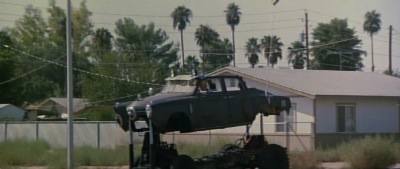
The film first came to my attention, years after its release, via my friend Todd Hanson, a gifted writer for The Onion whose pop culture enthusiasms had a way of getting passed from co-worker to co-worker. When I got the chance to speak to Altman, I knew I had to devote at least a few of my previous 20-minute slot to what had by then become an office-wide obsession. “I was attacking the teen mentality of the audience,” he said, “and I just was a little too… Nobody got it.”
Looking back, it might be that not enough tried. At that low ebb of Altman’s commercial fortunes—post-Popeye, pre-Player—he’d become too easy to take for granted and an odd, flawed, but undeniably one-of-a-kind film could be dismissed as just another ‘80s misstep. Maybe it seemed like we’d have Altman movies forever, and the era in which studios might somehow find themselves funding impossible-to-define oddities that doubled as single-finger salutes to the bad taste of their intended audience would never end.
* In an odd case of two geniuses drawing inspiration from an unlikely source, Mann and Carroll’s stories also inspired D.R. and Quinch, an early writing effort from comics great Alan Moore.
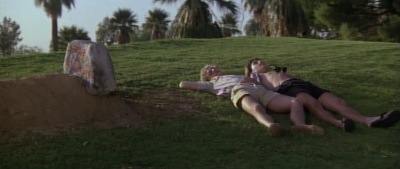
#robert altman#o.c. and stiggs#popeye#the player#the onion#national lampoon's animal house#screwballs#private school#losin' it#fraternity vacation#porky's#musings#oscilloscope laboratories
3 notes
·
View notes